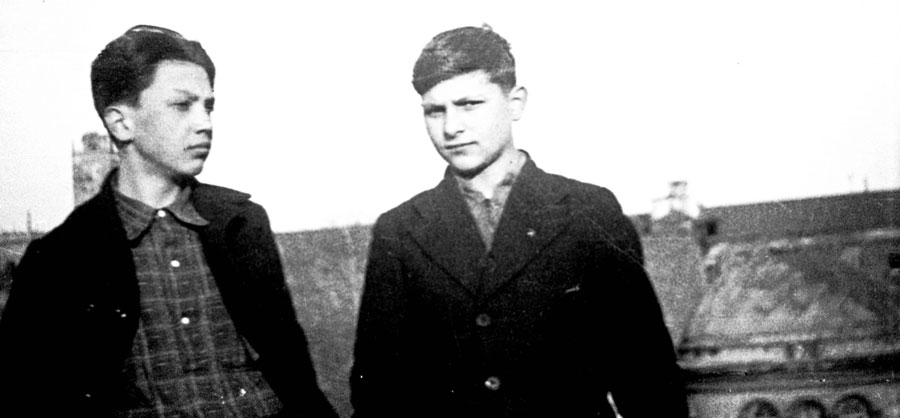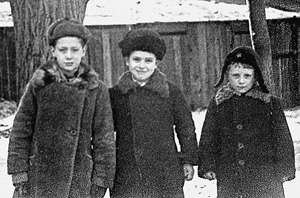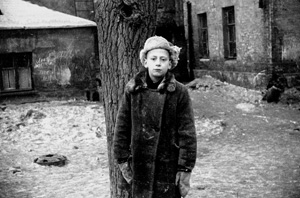The tallest guy in these photos is Igor Berukshtis. He was a gifted jazz musician who defected from the USSR sometime at the end of the 60’s – beginning of the 70’s. Not emigrated, but defected while his band was touring Japan. Many newspapers wrote about it at the time. Such a flight from the country meant real drama for the relatives left behind, especially when the authorities made sure to trash defectors. It was common knowledge that an active jazz musician simply could not have a decent professional life inside the country. Sometime later, despite the jamming devices, I heard him playing on a short wave Western radio station. Presently, he lives in Germany.
And here he is again with a mutual friend, Yuli Yevdokimenko, on the roof of my building. My address was 25 Bolshoi Afanasyevsky. This second-rate picture is interesting in that in the background you can see the tower of the Ministry of Defense – which will help me soon perform an elegant transition to my next subject; and in the lower right corner you can discern the church’s cupola, then half in ruins and lacking a bell tower, that gave our Afanasyevsky Pereulok its name. At the time, some kind of mechanical workshop occupied the church.
 A
And now please take a look at the next photograph, unfortunately, also of poor quality. These are the kids from our courtyard. One of them, by the way, is my step-brother Zhenya. It is winter, most likely 1946. On the left in the background you can see the big house on the corner of Bolshoi Afanasyevsky and Sivtsev Vrazhek – it’s still there. The latter I mention simply for you to get your bearings. In the middle you can see a shed standing in the courtyard. It seems that every family used to have one. There is firewood in the shed – fuel for our stoves. My Mom would say proudly, “We have a Dutch stove.”

We also had firewood stamps. The firewood warehouse stood where the Novooarbatsky supermarket stands now. The warehouse entrance, surrounded by a fence of unfinished logs, was on Arbatsky Pereulok – exactly where the entrance to a beer lounge is now, almost at the corner with Novy Arbat. I am sure of that because the house right across the street is still standing. I used to visit my classmate, Semyon Yuditsky, whose mom was the children’s writer, Khorol. I remember how in winter we would carry firewood from the warehouse on a sled to our shed. And then we had to chop it. Why they issued us firewood after the winter had already begun is a mystery. I think it may have been for the same reason that Pavka Korchagin laid down railroad tracks for a lumber mill in the dead of winter instead of in the summertime.
 I want to show you one more photo of Zhenya, which allows to see another corner of the Arbat courtyard from our childhood.
I want to show you one more photo of Zhenya, which allows to see another corner of the Arbat courtyard from our childhood.